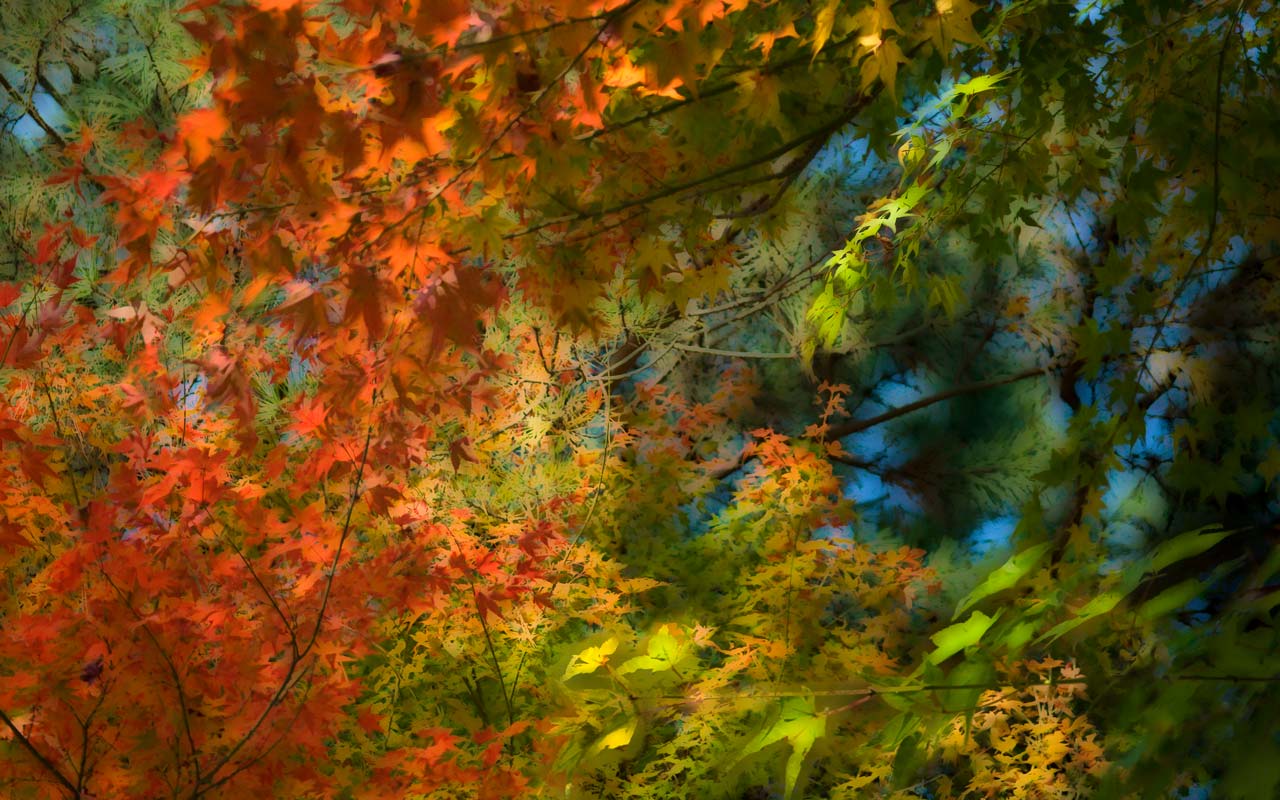
Nikon D200 + Nikkor 17-55/2.8 @ 48mm — 1/640 sec, f/2.8, ISO 200 (sort of) — full exif & map
( desktop-background versions are available below )
This post describes how I made the funky-color Kyoto fall leaves image from the other day.
I'd wanted to check out the vine growing through a bamboo fence again, in afternoon light (as opposed to the morning shade I'd seen it in before), so I went back on Wednesday afternoon. It was a productive visit, with a few shots of the fence that will certainly find their way here in the future. However, the subject of today's post is what I saw when I looked up.
Kyoto's impressive autumn colors are in full force now, but there are some trees that are slower in turning, and evergreens that won't turn at all, and the resulting range of colors is something that really appeals to me. I looked up and found a screen that's common this time of year: highly dynamic colors mixed in a highly dynamic space (that is: lots of depth and color to the scene).
I fired off three quick shots, focusing at points close, middle, and far. You can see these three shots by mousovering the first three boxes below the image:
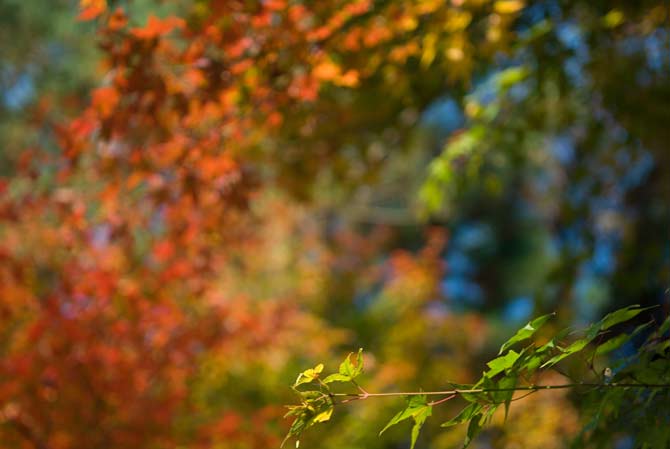 Nikon D200 + Nikkor 17-55/2.8 @ 48mm — Focus at 1 meter — 1/640 sec, f/2.8, ISO 200 —
full exif
Nikon D200 + Nikkor 17-55/2.8 @ 48mm — Focus at 1 meter — 1/640 sec, f/2.8, ISO 200 —
full exif
mouseover a button to see that image
I'm certainly biased 🙂, but I think any of these would make a lovely desktop background. The links for the various desktops changes with the button above, so you can select the image you prefer:
However, while applying slight crop/rotation adjustments to the images to account for a bit of camera movement between the shots, I happened upon a mixture of the three that I found breathtaking, and which appeared in the post other day. The “Mix” button above shows a reduced-sized version of the result. (The image at the top of this post is small crop from a half-sized version.)
The mixture is all three images combined with Photoshop's “Darken” blend mode, after having loaded them into individual layers of a single document. As if Photoshop's multitude of filters aren't enough to learn, there are oodles of “blend modes” which influence how two images can be combined to produce a third (or, in this case, how three images can be combined to produce a fourth).
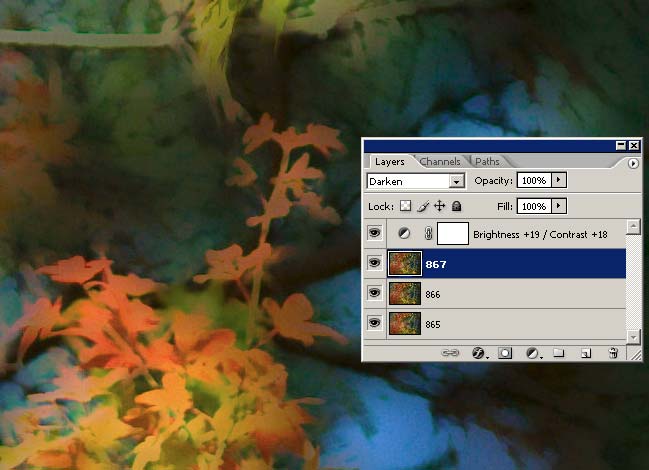
I have a whole book on the subject of Photoshop blending modes, as I once mentioned, but I haven't really done much yet other than flip through it.
In any case, the Darken blend mode is easy to understand: at each point of the canvas, the images are compared and the darkest of them is kept for that spot in the result. What's difficult for me to understand, intuitively, is what that will result in. In this case, it's an almost surreal, paint-like quality.
I then brightened it up just a tad to make up for the overall darkening, increased the contrast a bit, and that's it.
I seem to like taking multiple shots of the same scene with different focus or different depth-of-field, as I found I had a few other sets of images that might work with this technique. Unfortunately, they had too much movement among the images (such as branches blowing in the wind, or recomposition on my part) that I couldn't get a good result. Especially with branches, since their darkness will “shine through” (so to speak) to the final result every time — due to the “darker version wins” policy of the Darken blend mode — if they don't line up.
Here's just such an example:
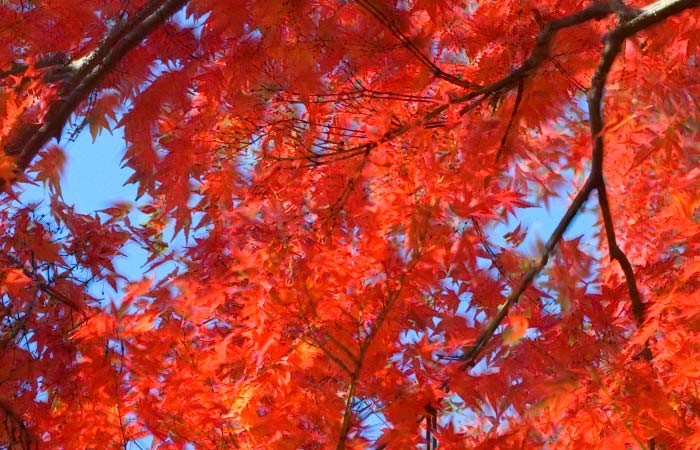
The larger branch on the right is spot on in all three shots, but you can see repeats with the others. I think it ruins the effect.
It could be that this effect just happens to work with the shots I first tried it with, but I hope it turns out to be a general technique. It's on my list to go out and try taking different-focused shots of different scenes, and see how this works.
Of course, if someone else gives it a try, I'd love to see the result.
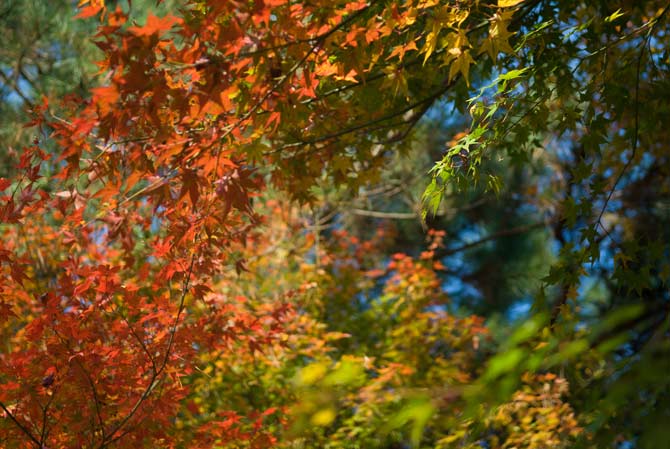
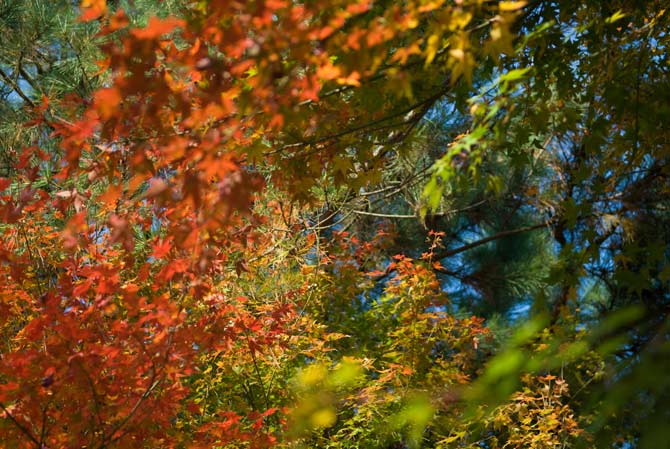
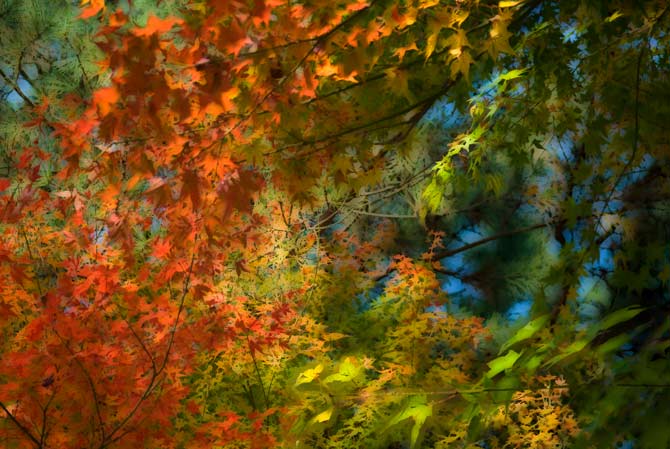
Thanks for sharing your thoughts and pictures. I have learned a lot by reading your blog. By the way, what is the difference between blog and web site?
Best wishes to you and your family!
Chuck – USA
Thanks, Chuck, for your kind words. A blog is a particular type of web site, one which has the feeling of a public diary.
I like the design, setting and contents of your blog. It would be very excited for me to design and construct a similar blog. I do not have any technical knowledge of building a blog. What is the best way to start, may I ask? Thank you.
Thanks again, Chuck. Check out http://360.yahoo.com/ for an easy, non-technical way to create a blog and surrounding content.
The best thing about a personal blog is that it’s a record of your now for your own future.
Thanks again. I will start from there. Reading your pictures’ captions have brought me back wonderful memories that my wife and I had with our now-grown-children. Indeed, a personal blog is a record of our own little personal and family stories.
Grace from the Lord Jesus Christ be with you and your family.
Chuck
Very neat. I have put it in my rotating desktop folder. 🙂
Either Safari is odd — or you mixed up the “Mix” and “Near” files for the 2560×1600 version.
-ask
Oops, thanks Ask, I think it’s fixed now. There are 31 individual images associated with this one post, which is a bit much for my neurons (both of them!) to handle 🙂
Hi Jeffrey. I realize you made this post quite a while ago but I hope you’re still checking comments. Did you know you can achieve a very similar result with just one image? If you go to my web site, http://www.earthtonesimages.com and search for “orton” you can see some examples. I’ll put up a couple befores too so folks can compare. Please drop me an email if you’d like a detailed description. You probably already have this technique figured out but thought I’d check.
Best, John